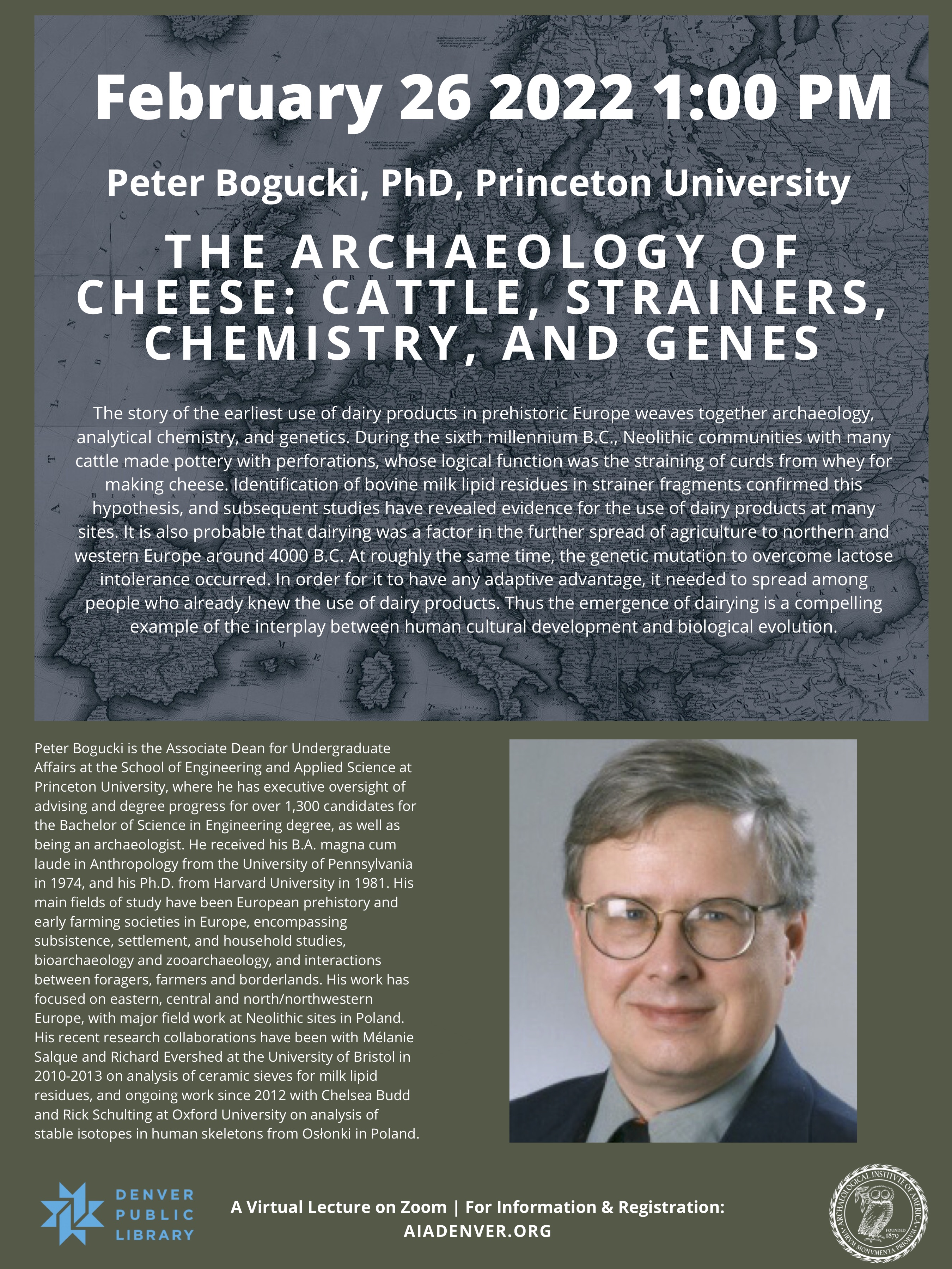
This is an online event.
Sponsored by: Archaeological Institute of America
The story of the earliest use of dairy products in prehistoric Europe weaves together archaeology, analytical chemistry, and genetics. During the sixth millennium B.C., Neolithic communities with many cattle made pottery with perforations, whose logical function was the straining of curds from whey for making cheese. Identification of bovine milk lipid residues in strainer fragments confirmed this hypothesis, and subsequent studies have revealed evidence for the use of dairy products at many sites. It is also probable that dairying was a factor in the further spread of agriculture to northern and western Europe around 4000 B.C. At roughly the same time, the genetic mutation to overcome lactose intolerance occurred. In order for it to have any adaptive advantage, it needed to spread among people who already knew the use of dairy products. Thus the emergence of dairying is a compelling example of the interplay between human cultural development and biological evolution.
Short bibliography and/or website on lecture topic:
Curry, Andrew. “Archaeology: the milk revolution.” Nature News 500.7460 (2013): 20.
